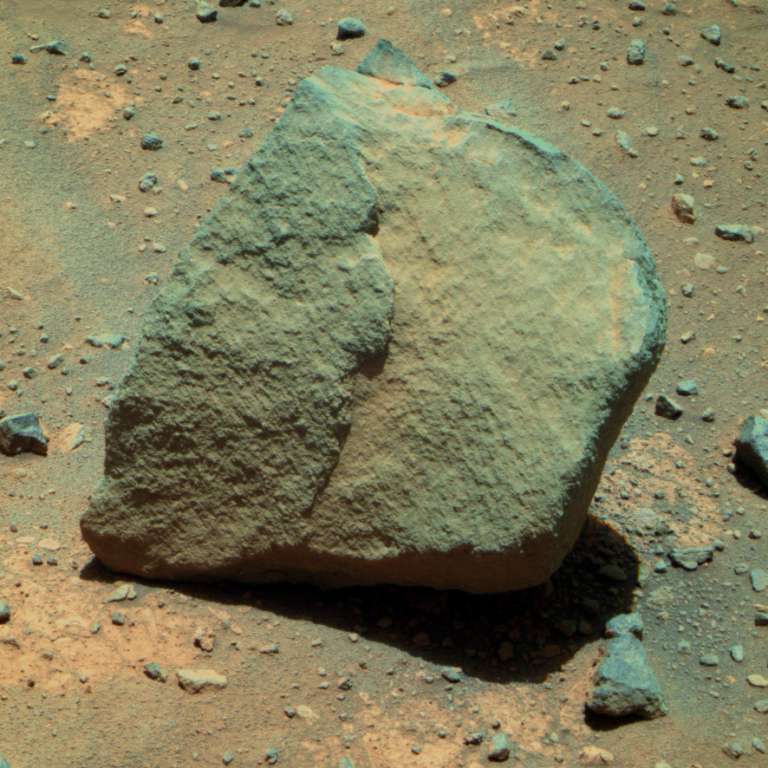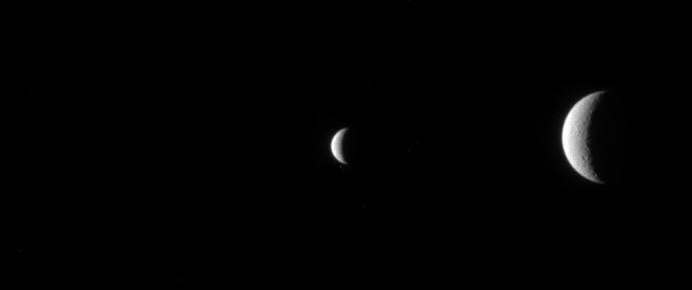Emily Lakdawalla • Nov 18, 2009
Opportunity's poking at Marquette Island; Cassini's catching dancing moons
Since tomorrow's class is going to be on playing with raw images from the rovers and Cassini, I've been playing with recent raw images from the rovers and Cassini! I just thought I'd share a couple of the fun items I've been working with.
Opportunity has paused for a few sols to examine a large rock that, for once, is not a meteorite. This one is named "Marquette Island." Among the work they've been doing on Marquette is to take a 13-filter set of Pancam images, which can be merged in various combinations to study how the color of Marquette differs from its surroundings. More scientifically, the rover data can be used to study Marquette's spectral properties, which are related to its composition (or at least the composition of its surface), but the raw images aren't suitable for that kind of spectral analysis. They can be used to make neat pictures though!

It looks like they are now going to try to brush at the surface to see if the color -- which looks an awful lot like the soil behind it -- changes when the surface coating of dust is brushed off. Here's a fresh-from-Mars Hazcam image of Opportunity's RAT poised on the surface of Marquette Island.

Finally, in the outer solar system, Cassini's been taking movie pictures again. This is a particularly nice set; Enceladus is the moon held still in the viewfinder while Rhea rushes behind it.

Learn how to find and process these and more images tomorrow!
Let’s Go Beyond The Horizon
Every success in space exploration is the result of the community of space enthusiasts, like you, who believe it is important. You can help usher in the next great era of space exploration with your gift today.
Donate Today

 Explore Worlds
Explore Worlds Find Life
Find Life Defend Earth
Defend Earth

